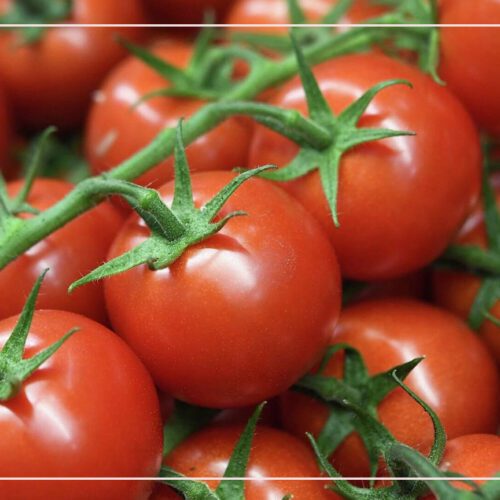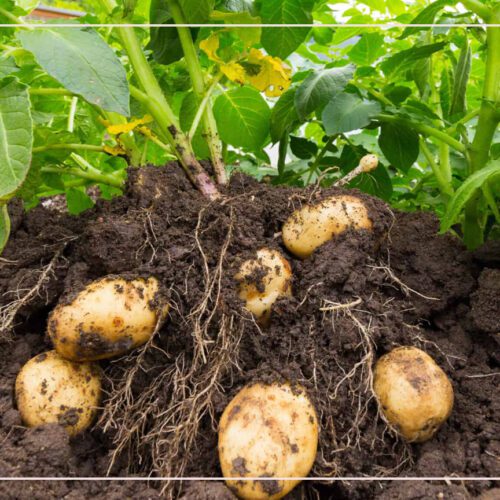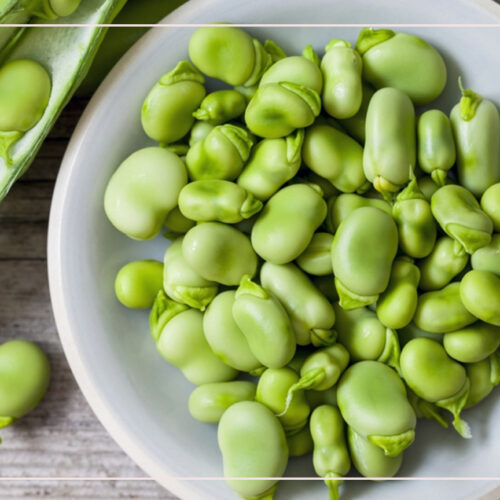
All countries in the world call wheat yellow gold, so the growing of wheat is the best agriculture, and any country is interested in maintaining food security. Wheat is used in many important products, such as baby food and biscuits.
In this article, we will be interested in talking in detail about planting wheat, its timing, how to plant wheat, and other information.
Growing wheat
Growing wheat is one of the best agricultural practices in the world. Wheat must be grown in all countries because it is used in the manufacture of bread and pastries and is one of the most important economic resources. It is not possible to live without wheat and also grow wheat.
Wheat is grown to produce grains that are ground to make bread and pastries; it is also a winter plant. There are a lot of benefits to wheat, and it contains proteins, carbohydrates, minerals, and vitamins that maintain the health of the human body.
Time to grow wheat
Growing wheat depends on a number of factors, one of which is the timing of the harvest. Grow wheat from November until the end of December, and it takes a short period of time, almost 2 months, depending on the difference in weather factors and the time of the wheat harvest in February or March.
Preparing for growing wheat
Preparing for growing wheat: in order for the seeds to have a suitable medium to be grown, the soil must be prepared by plowing it and adding the seeds using suitable irrigation methods. Here are some important tips for soil preparation for starting to grow wheat:
- The soil must have a medium structure and not contain a lot of nutrients, such as iron.
- The pH of the soil should be 7.
- The soil should not have high salinity, which reduces plant growth.
- The soil should be plowed well and appropriate fertilizers added.
Growing wheat in Qatar
Qatar is one of the desert countries that suffers from the provision of water for agriculture and its climatic conditions, which are also considered hot and dry. With these conditions, it is difficult to growing wheat in Qatar because of the specific weather and water that growing wheat in Qatar requires.
But the country of Qatar has been working to solve any problems that it may face, starting with growing wheat and using the latest techniques that have helped it in the fields of irrigation, plowing, and harvest, as it has become a country that produces wheat in good quantities.
In 2021, Qatar produced approximately 2,500 tons of wheat through agriculture in the desert by reclaiming agricultural land and using the latest irrigation techniques that help to rationalize the use of water and make full use of every drop. Qatar also used the latest agricultural machinery, which in turn reduced the cost of production.
Growing wheat in Saudi Arabia
Growing wheat in Saudi Arabia was stopped for several years because growing wheat needs a lot of water, and Saudi Arabia was suffering from water scarcity because of their desert environment. Growing wheat was back to normal in 2017, so agriculture was stopped for only two years.
The possibility of growing wheat in Saudi Arabia
The government of Saudi Arabia issued a new law that prohibited the export of a number of agricultural crops that consume large amounts of water (watermelon, cantaloupe, potatoes, dry onions, tomatoes, corn, olives, squash, and grapes). This law was issued by the Ministry of Environment, Water, and Agriculture in Saudi Arabia.
And also, the government of Saudi Arabia issued a law offering agricultural financing for wheat cultivation to farmers through the Development Fund. In order to increase the national production of wheat and encourage all farmers to grow wheat.
The Ministry of Agriculture in Saudi Arabia gives the farmers certain types of wheat seeds that are suitable for hot and desert climate conditions, and it also pollinates the wheat seeds given to farmers, which prevents the presence of many diseases that affect the wheat growing season in Saudi Arabia.
How to grow wheat in Saudi Arabia
The Ministry of Agriculture in Saudi Arabia has adopted a method for growing wheat according to customized standards that allow wheat seeds to grow and increase local production, and this is how to grow wheat in Saudi Arabia in hot weather:
- The timing for growing wheat must be in spring and autumn climates.
- Using sprinklers for irrigation so that the water reaches into the soil and irrigates large areas as well.
- Adding organic fertilizer taken from animal waste to the soil at a rate of 1 cubic meter per 100 cubic meters.
- Plowing the soil very well and then leveling the land.
- Irrigate the soil well once or twice every day.
- Dispersing the seeds obtained from the Saudi Grain Authority at a rat: 2 or 3 seeds for each hole.
Timing for growing wheat
Wheat is considered a winter crop, so it can grow from 4°C until 22°C, so the timing for growing wheat starts in November until December. Wheat takes about 60–90 days to mature from the time it is planted until it is harvested, depending on the climate.
How to grow wheat
Wheat covers most of the earth’s land during planting, and its global production is estimated at approximately 750 million tons a year. Now we will talk about how to grow wheat completely through a number of paragraphs or stages.
Choosing and prepare the soil
Before planting wheat, the farmers should choose the soil type; wheat can adapt to a lot of soil types; and the farmers should restrict the following:
- We must choose equal or paved land.
- Salinity should not be high in the soil.
- The soil must be light and retain water.
- The land must be plowed well, approximately twice.
Processing of growing wheat
The processing of growing wheat is done through a number of methods. It is used in many countries around the world, but now we will talk about the best method, which is growing wheat on terraces. This method has a lot of space-saving benefits, and here is how to grow wheat:
- Planning the soil manually or by agricultural grading machine, so the lines between each other must be 25–30 cm.
- Drilling holes inside the lines and between the holes must be 7–10 cm, and we should put inside each hole 3-5 wheat seeds.
- Irrigating the soil on terraces, allowing the back of the terrace to be saturated with water without flooding, will ensure that the water reaches the seeds well and sufficiently.
- Add superphosphate and nitrogen fertilizers before and after the irrigation.
- The soil must be taken care of by irrigating it once every 2 days, and after 3 months or less, the harvesting process begins, and that is how to grow wheat.
Growing wheat season
The season of growing wheat determined by a timetable depends on temperatures, so the season for growing wheat starts in spring, which is from the beginning of November until the end of December at 4°C to 22°C.
The harvest starts in the summer, specifically in June, and at this season, the growing of wheat ends and the seeds have matured.
Duration of growing wheat
The duration of growing wheat changes depending on the types of wheat; some are planted in winter and some are planted in autumn. For the one planted in winter, the duration of growing will be 6–8 months, and for the one planted in autumn, the duration of growing will be 3–4 months. This period changes depending on the type of soil and weather.
Growing wheat from A to Z
To speak about growing wheat, we must first talk about its benefits. Wheat contains a lot of proteins, minerals, and vitamins. Growing wheat is considered one of the most important economic and nutritional elements that provides food for humans through bread and animals through fodder.
Growing wheat stages
One of the most important headlines that we should talk about is the process or stages of growing wheat, and we will give you the best process that is a healthy method free of any diseases or defects. These stages take place in several steps, which are:
- First of all, we must choose the best soil for growing wheat, which is light or clay soil that stores water, and it must be free of weeds.
- We must plough the soil several times and add organic fertilizer and superphosphate, and we must make sure that the land is flat.
- Now we should plan the soil horizontally, and the lines must be equidistant, which is 30 cm.
- We must make holes in a depth of 5 cm and put 3–4 seeds in each one, and the distance between the holes must be 10 cm.
- Before starting the irrigation process, we add phosphate fertilizers, superphosphate, magnesium, and iron.
- Now we are starting to irrigate the soil by normal irrigation or with sprinklers.
- After 3–4 months, wheat will be produced in a complete manner and free of any defects.
Productivity of wheat acres
In many countries, wheat acre productivity averages 2.5 tons of wheat per acre for fertile agricultural lands, and in some seasons wheat acre productivity may increase to 3 tons of wheat per acre.
In desert areas, wheat is produced at an average of 900 kg per acre, a small proportion because of the hot climatic conditions in the hot areas and the scarcity of water.
Growing wheat with sprinklers
Growing wheat with sprinklers It is one of the best irrigation methods that saves large amounts of water. Agronomists prefer sprinkler irrigation rather than submersion irrigation. By making a comparison between the methods of growing wheat by submersion and growing wheat with sprinklers, the irrigation process with sprinklers will be better because of:
- The length of the stick and the size of the spike in the spray method are better than submersion.
- Benefiting from the amount of fertilizer using the sprinkler method is better than submersion, as by adding 50 kilograms of fertilizer, the plant benefits from a full 50 kilograms in the method of growing wheat with sprinklers, while the submersion method benefits only 20 kilograms.
Wheat irrigation schedule with sprinklers
Wheat needs, on average, from 350 mm of water to 600 mm of water. To distribute these quantities, it is preferable to use the method of growing wheat with sprinklers within an irrigation schedule designated for it, which takes place through 6 stages, which are:
- First stage: after 20 days from planting.
- Second stage: after 40 days from planting.
- Third stage: after 60 days from planting.
- Fourth stage: after 80 days from planting.
- Fifth stage: 100 days from planting.
- Sixth stage: 120 days from planting.
Growing wheat at home
A lot of people search about how to grow wheat at home, which is very easy, and we will mention it to you later, but the question is, why do many people prefer to grow wheat at home?
The answer is: it depends on two things. The first is saving money by not buying it from markets to make breads or pastries, and the second is being healthy. This is because of the presence of white flour, which causes many problems, such as obesity.
How to grow wheat at home
Growing wheat at home is very easy, it does not require many skills, and anyone can do it. Many schools do it for educational purposes, introducing students to the method of growing wheat step by step. Here is how to grow wheat at home:
- Immerse the wheat seeds in water in a plastic container for 8–12 hours.
- We dry the same plastic container and put a layer of tissues at the bottom. After that, we should water the paper, place a strainer on top of the tissues, and water it again.
- Put the seeds on top of the tissues and water it in order to stimulate the roots to come out.
- Put another layer of tissues on the seeds to create a humid climate between the layers of tissues.
- Wait for the roots to descend from the strainer layer to the bottom layer of the container.
- After 10 days from planting, the stem will be longer and greener and will be ready for harvest.





